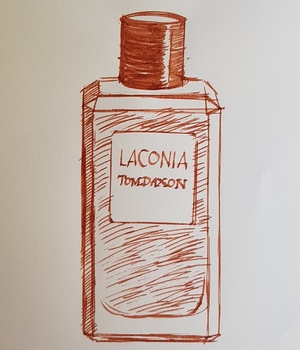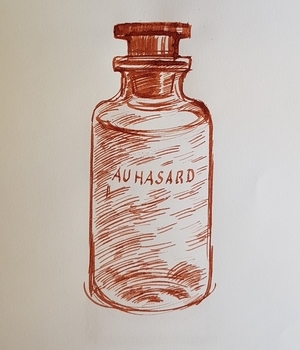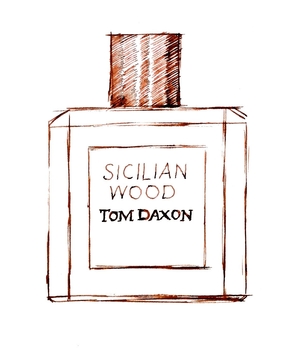Tagged With ‘cardamom’
Tom Daxon
Laconia
2 July, 2018
 The Greek region of Laconia includes some of the most historic and spectacular parts of the Peloponnese, including the city of Sparta (the regional capital), the Mani peninsula and, on its eastern edge, the extraordinary presque-île of Monemvasia. Seen from the mainland, this huge rock – over 100 metres high, 300 metres wide and a kilometre long – towers over the sea that encloses it, surrounded by precipitous cliffs on every side. Connected to the shore by a narrow causeway, it makes a formidable natural fortress, and in the middle ages an important city grew up on its summit, connected to a small walled town on the narrow shelf at its base.
The Greek region of Laconia includes some of the most historic and spectacular parts of the Peloponnese, including the city of Sparta (the regional capital), the Mani peninsula and, on its eastern edge, the extraordinary presque-île of Monemvasia. Seen from the mainland, this huge rock – over 100 metres high, 300 metres wide and a kilometre long – towers over the sea that encloses it, surrounded by precipitous cliffs on every side. Connected to the shore by a narrow causeway, it makes a formidable natural fortress, and in the middle ages an important city grew up on its summit, connected to a small walled town on the narrow shelf at its base.
Lacking water and reliant on man-made cisterns cut into the rock, the city was gradually abandoned and today lies in romantic ruins, overgrown with scrub and difficult to explore. But the little town has been gradually restored, and now forms a car-free tourist haven. It was while staying at a luxury hotel here that British perfumer Tom Daxon found the inspiration for his latest scent, in the form of lemonade made with ice, local mint and honey and lemons grown on the hotel’s own estate. He’s named it after the region, which itself gave us the word ‘laconic’, apparently because Spartans were famously sparing with words.
Like me, Daxon is a fan of colognes, especially for the summer months, but he also feels that his customers want something that lasts longer than a few minutes on their skin. Citrus scents, refreshing though they may be, are notoriously short-lived, so the question was how to extend his new fragrance in an interesting way. His solution includes quite a long list of zingy and green ingredients, starting with lemon, yellow mandarin, orange and bergamot, followed by violet leaf, spearmint and clary sage, as well as ginger, cubeb, pink pepper and cardamom, all underpinned by vetiver and long-lasting synthetic musks.
The result is an attractive, fresh-smelling perfume with good staying power, though personally I’m willing to forego longevity in a cologne in favour of that all-important if all too short-lived blast of uplifting freshness – a laconic cologne, if you will. But when you’re paying £155 for 100ml, I can see the argument in favour of depth and development. I also admire the design of Daxon’s chunky, faceted bottles and smart monochrome packaging, which adds to the feeling of weight and lasting quality.
Louis Vuitton
Au Hasard
 Almost alone among major luxury brands, Louis Vuitton did not have a single perfume to its name until 2016. That was the year when – after four years of rumours and the appointment, in 2011, of Jacques Cavallier as the company’s in-house perfumer – the company released seven scents in smart but simple bottles designed by Marc Newson. Floral and feminine in style, they were excellent examples of their kind.
Almost alone among major luxury brands, Louis Vuitton did not have a single perfume to its name until 2016. That was the year when – after four years of rumours and the appointment, in 2011, of Jacques Cavallier as the company’s in-house perfumer – the company released seven scents in smart but simple bottles designed by Marc Newson. Floral and feminine in style, they were excellent examples of their kind.
Two years on Vuitton and Cavallier have turned their attention to the male sex, with ‘Les Parfums’ for men – five new fragrances that, in their words, ‘pay homage to the adventurer on a quest for self-revelation’. Sensibly they’ve kept the same design for the bottles and packaging, with only subtle changes: each eau de parfum is a different pale colour, while the black magnetic bottle stoppers are stamped with the silver LV logo.
Sur la Route is Vuitton’s take on eau de cologne, with the evanescent but always refreshing scent of Calabrian lemon – specifically the zingy fruit and the bitter-fresh pulp around it – extended with a special grade of cedar and a touch of bergamot. The green note of freshly cut grass is balanced with the softer smell of Peruvian balsam which, Cavallier says, ‘includes the freshness of citrus and spicy notes of pink peppercorn and nutmeg’.
Orage uses the sexy, earthy smell of patchouli and pairs it with long-lasting top-quality iris, which adds a plush note of luxury to any scent. Though it’s not as stormy as its name suggests (or as woody as the press release describes it), Orage does have a hint of the green freshness that follows a summer downpour in the countryside.
L’Immensité has, perhaps, the most in common with the general run of men’s ‘sports’ fragrances such as Dior’s Sauvage, mainly because it has an overdose of the synthetic molecule Ambroxan. Some people love its mineral, slightly peppery note, but it reminds others of an electrical fire. Here, it’s framed by bitter grapefruit, ginger and labdanum.
For lovers of gourmand perfumes, there’s Nouveau Monde, which uses an extract of natural cocoa from the former French colony of Ivory Coast in combination with oud to create a rich and exotic scent with a touch of saffron underneath. Despite being an eau de parfum strength, it’s restrained rather than overpowering, like all the fragrances in the range.
My personal favourite, though, is Au Hazard, which takes another classic ingredient of men’s perfumery, sandalwood, using a sustainably cultivated variety from Sri Lanka. It’s a gentle, slightly spicy fragrance, with hints of cardamom and ambrette seeds, which would smell equally comfortable as a day or evening scent.
Tom Daxon
Sicilian Wood
11 January, 2015
 I had high hopes of Sicilian Wood. Tom Daxon launched his perfume business in March 2013 at the age of 25, and has quickly gained a lot of fans. I’m not surprised, as he looks like a nice chap and he should know his stuff: his mother, Dale Daxon Bowers, was trained as a chemist and worked for Mary Quant cosmetics before becoming creative director of Molton Brown, so you could say that Tom grew up in the fragrance business.
I had high hopes of Sicilian Wood. Tom Daxon launched his perfume business in March 2013 at the age of 25, and has quickly gained a lot of fans. I’m not surprised, as he looks like a nice chap and he should know his stuff: his mother, Dale Daxon Bowers, was trained as a chemist and worked for Mary Quant cosmetics before becoming creative director of Molton Brown, so you could say that Tom grew up in the fragrance business.
He’s started out with a small range of nine different perfumes, and as you’d hope given his background they’re outstandingly well designed and packaged, with sharp typefaces, smart faceted bottles and attractive boxes cleverly secured with criss-crossing black ribbons.
So far so good. The only trouble is, try as I might I just can’t get to like the perfume inside.
Daxon compares Sicilian Wood with ‘a citrus grove warming in the sun… [with] an effervescent, hyper-real citrus top note [that] settles into a base of seductive woods.’ He’s also described it as ‘a budget-less woody citrus [that] will prove a revelation to anyone left underwhelmed by all the bland versions out there.’
I certainly get the citrus, and the warmth, which emerges from a mix of (among other things) cardamom, guaiac wood, jasmine, cedar and sandalwood. But Sicilian Wood also has to me an unsettling, slightly sickly, somehow faintly chemical smell, which it shares with so many men’s fragrances on the market (especially so-called ‘sports’ scents) that I call it cheapone: the very opposite of ‘budget-less’, in other words.
Whatever it is, it spoils this perfume for me, which is a shame, as I’d really like to like it, not least because it was created by Carla Chabert and her father Jacques, who was once assistant to the perfumer Henri Robert at Chanel, and is said to have had a hand in Chanel’s classic Cristalle. Time to explore some of the other perfumes in the range.